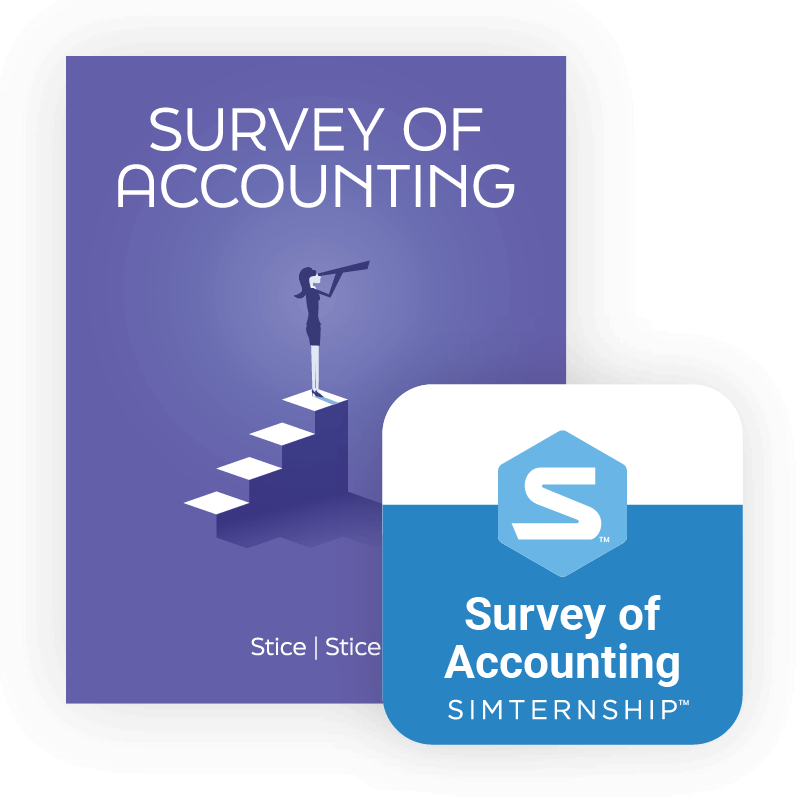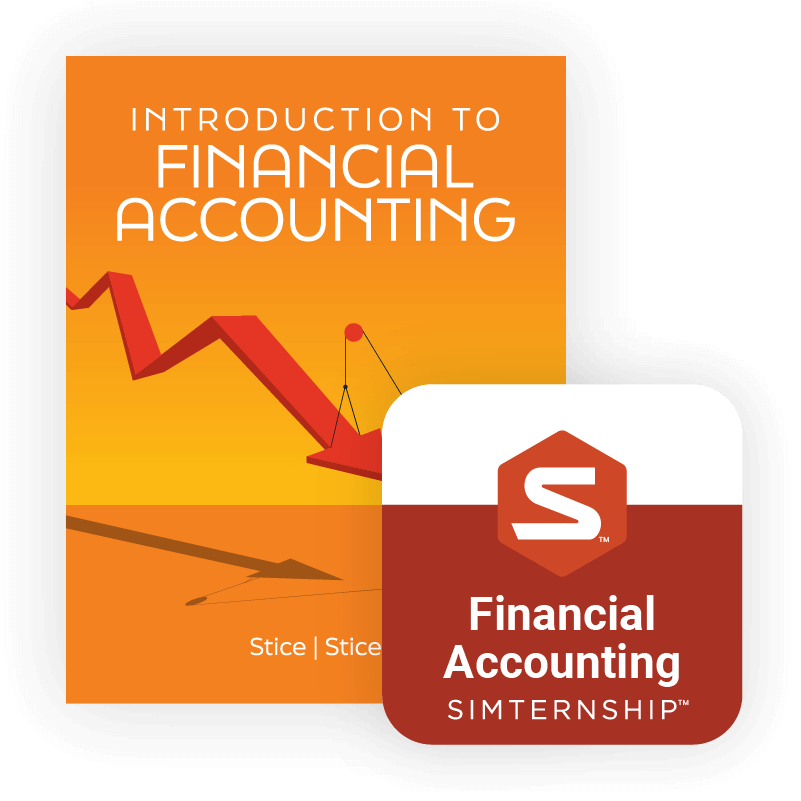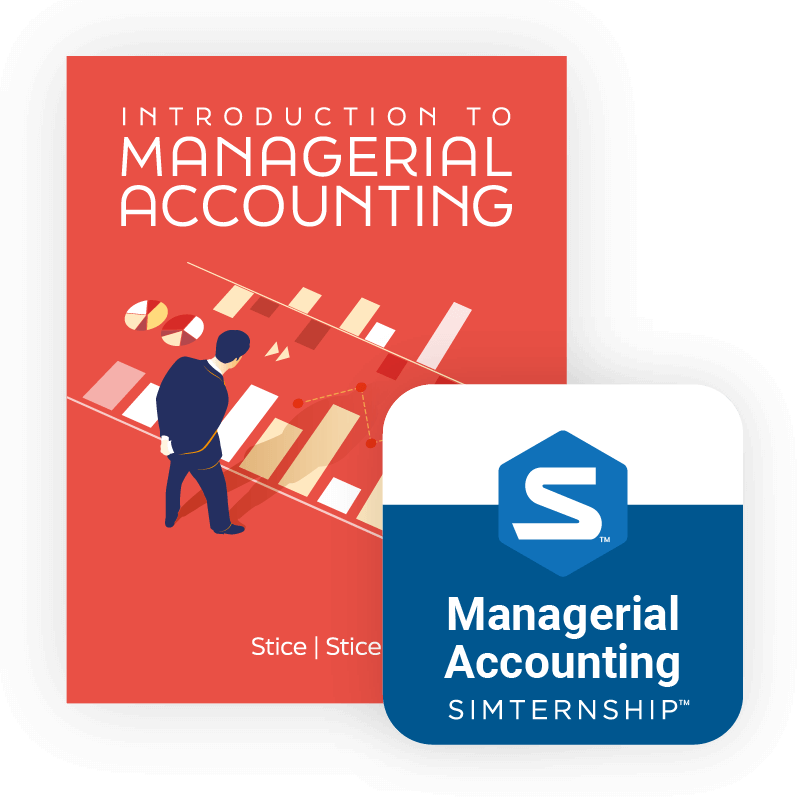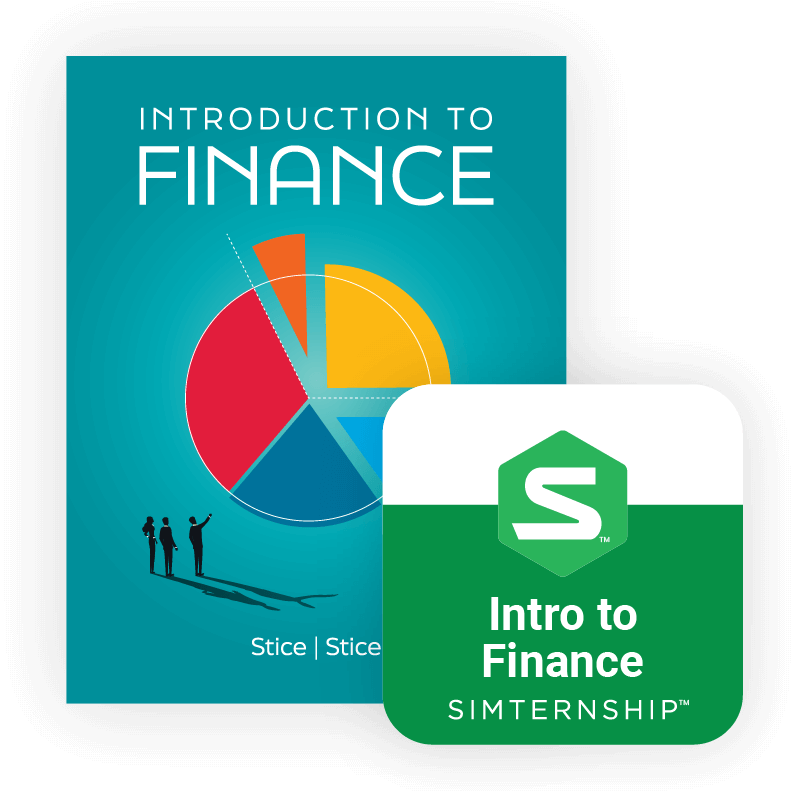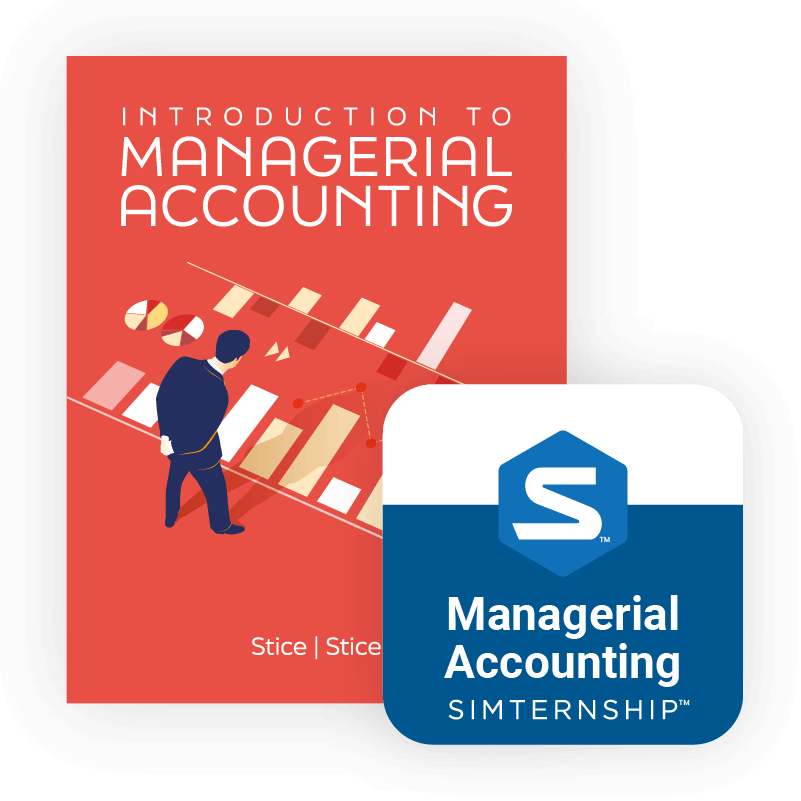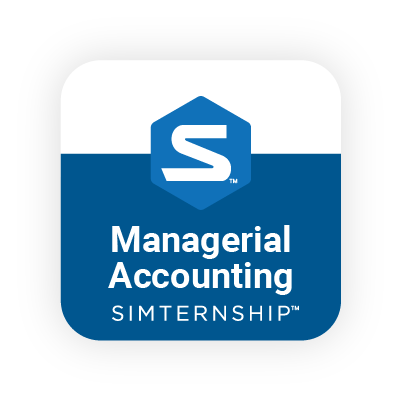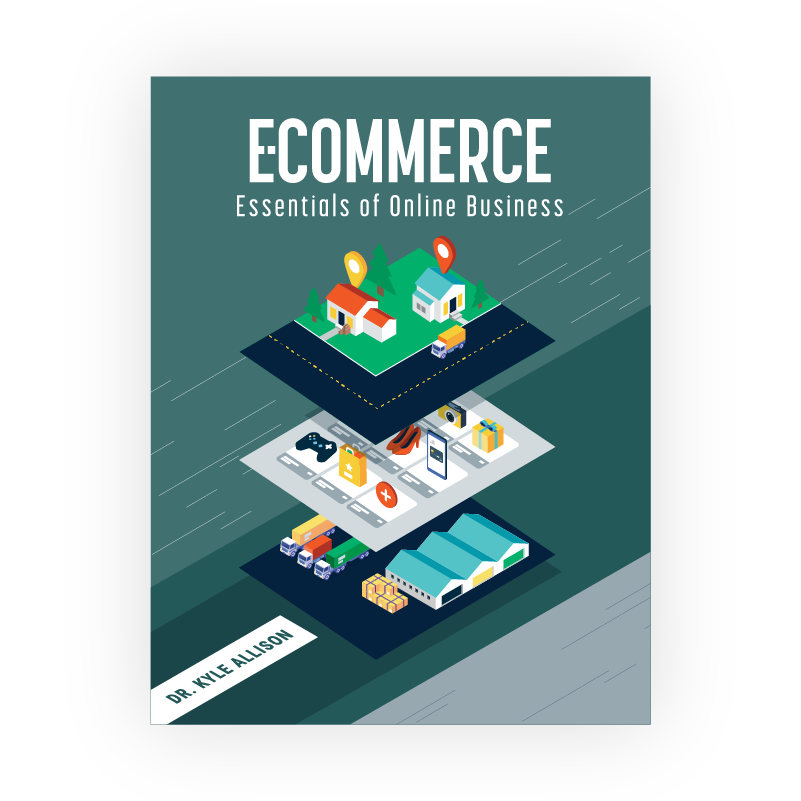The Survey of Accounting Simternship® + Courseware
Courseware that puts classroom concepts into professional contexts
The Survey of Accounting Bundle contains everything you need to teach an impactful accounting course. The courseware merges the essentials of financial and managerial accounting into one engaging, easy-to-use curriculum. Meanwhile, the forthcoming Survey of Accounting Simternship gives your students actionable, hands-on experience with the concepts you're teaching them in the classroom.
When used together, the courseware and Simternship help educators create robust experiential learning opportunities for students.
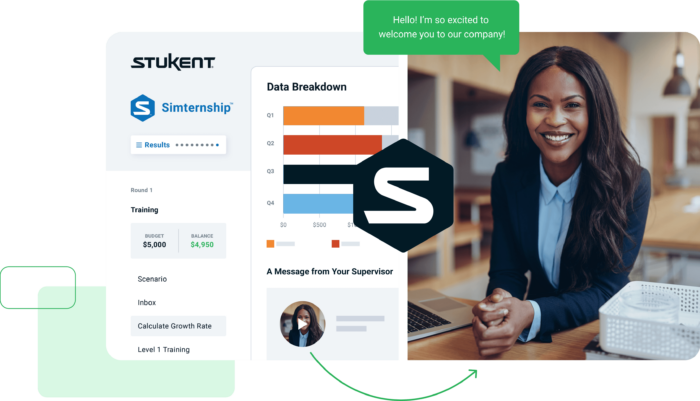
Coming Soon
Survey of Accounting Simternship
Take Learning Beyond the Book with a Simternship
The Stukent Survey of Accounting Simternship goes beyond your average business simulation, allowing your students to put the concepts you’re teaching them to work. Your students will practice making journal entries to account for business decisions and events, creating financial statements, and more.
A Simternship helps your students gain experience, master marketable skills, increase their knowledge retention, and yes, even make mistakes in a low-risk environment. It’s a powerful experience that cements learning for a lifetime.
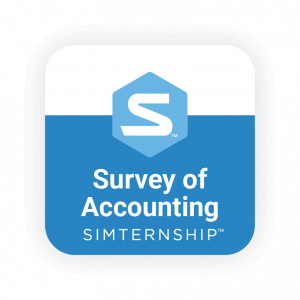
The Survey of Accounting Courseware
A Cutting-edge Accounting Curriculum Backed by Decades of Experience
The “Survey of Accounting” courseware adds a powerful toolkit to your accounting curriculum. The text contains ready-made resources for you, including detailed, turnkey lesson plans; engaging explanatory videos from the authors; auto-graded quizzes and engaging assignments; lecture slide decks; a sample course calendar; and so much more.
Plus, your students get an accessible, engaging text that brings complex accounting principles to life!
Together, authors Dr. Kay Stice and Dr. Jim Stice have more than 70 years of experience teaching accounting. They bring a practical, hands-on approach to modern accounting subjects, providing you with the resources to teach an authoritative course in less prep time.
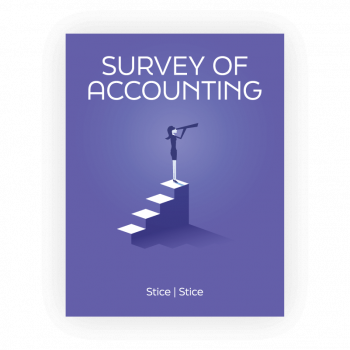
100+ Embedded Educator Resources
Everything You Need to Teach Your Best Course
- 15 chapters
- Engaging, author-led video content throughout every chapter
- 82 auto-graded Check Your Understanding activities
- 15 auto-graded Strengthen Your Skills activities
- 15 auto-graded chapter quizzes
- 15 lesson plans and lecture slide decks
- Cumulative glossary for student reference
- Sample syllabus, course outline, and calendar
What’s Inside
Table of Contents
Introduction: 7,000 Years Ago in Mesopotamia …
Introduction: Turning an Entrepreneur’s Dreams into Reality
Introduction: Bookkeeping as a Tool of War
Introduction: Shady Accounting Earns a CEO a 24-year Prison Sentence
Introduction: Who Owes Money to Google?
Introduction: Garbage, Blockbuster Video, and Depreciation
Introduction: In What Currencies Do Disney and Coca-Cola Borrow Money?
Introduction: The French Revolution, Gunpowder, and Financial Statement Analysis
Introduction: Medical Supplies; a Peruvian Restaurant; Panaca, Nevada; and Walmart
Introduction: I Paid the Restaurant $18, But How Much Did My Meal Cost Them to Make?
Introduction: Ramona’s Charity Banquet
Introduction: The Excruciating Excitement of Living from Paycheck to Paycheck
Introduction: A Case Study in Cost Variance Analysis: Living Through a House Remodel
Introduction: Is It Faster to Drive or to Fly When Traveling from Salt Lake to Denver?
Introduction: To Buy Or Not To Buy: The Weekend Car in Hong Kong
Hands-on Learning without the Hassle
Stukent Simternships integrate with your favorite LMS platforms
Single Sign-on
Grade Book Syncing
Deep Linking
Rostering


About the Authors

Jim Stice
Jim Stice is an emeritus professor of accounting at Brigham Young University, where he spent his career teaching, conducting research, and serving in administrative roles. He’s won numerous teaching awards, served as a visiting professor at INSEAD, and worked in executive education for companies such as IBM and Ernst & Young. Over his 30-year career, Jim has educated thousands of accounting students and professionals in person and has reached millions of learners online.

Kay Stice
Kay Stice is an emeritus professor of accounting at Brigham Young University. He holds a bachelor’s and master’s degree from Brigham Young University and a Ph.D. from Cornell University. He’s taught at top universities around the world and won numerous awards, including the Maeser Excellence in Teaching Award at BYU, which is the university’s highest teaching honor. In his 30 years of teaching, Kay has taught thousands of students in person and millions online.
One Platform. Hundreds of Resources. Unlimited Possibilities.
Additional resources for creating a great course
Always have the
latest edition
This courseware contains robust instructional resources for educators and students. Best of all, the Stukent team updates the courseware annually, which means your curriculum will always be on the cutting edge of your industry.
Support for you,
support for students
The Stukent Support Team helps students and educators get the most out of their Stukent experience. Whether you need help logging into your Stukent Simternship, navigating your courseware, or understanding simulation results, we’re here to help!
Stukent Events
Join us for webinars, product launches, and more!
Join the Waiting List
Survey of Accounting Simternship
